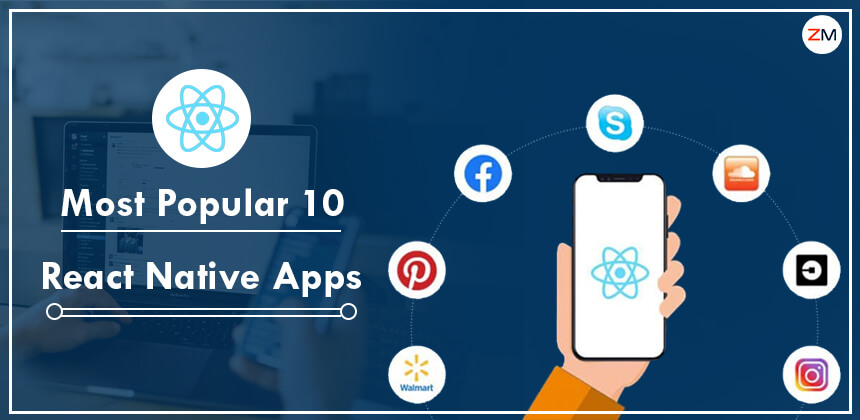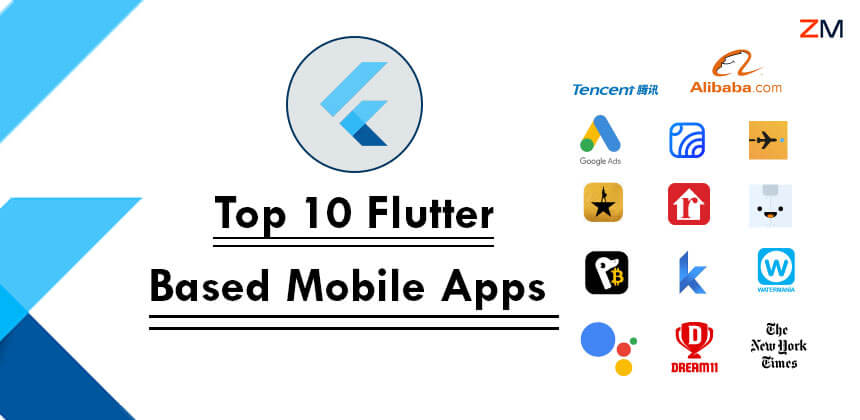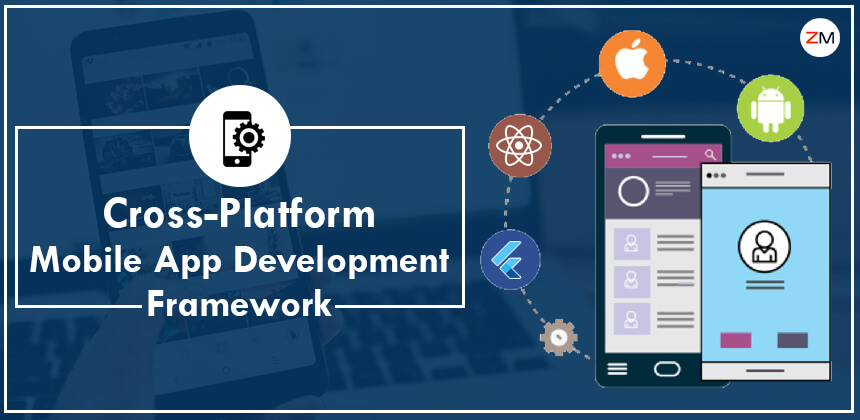We frequently assert that there is no "optimal technology" for a certain development sector. For instance, in 10 Most Popular Ionic Apps of 2023-24, we examined how 86% of respondents to the Ionic Annual Developer Survey chose Ionic to React Native. Despite the fact that this may be true, Ionic has disadvantages compared to React Native. The latter is also the mobile development framework of choice for many multinational corporations and small businesses. React Native now powers some of our favorite apps. However, before we list the top 10 React Native apps of 2023, let's briefly review what React Native is.
 Facebook is currently the most popular social network, and its mobile version is among the most popular apps in the world. Since 2010, Facebook, being the progressive tech titan that it is, has attempted to build a cross-platform application. At a time when other companies were significantly investing in native applications, this was a novel and odd concept.
Unfortunately, the available mobile development technologies were not cross-platform-ready in 2010, particularly for Facebook's requirements. Consequently, the original application was slow and buggy. In actuality, they were confronted with the identical problems they had when launching the website. As a result, they utilized their experience and accomplished precisely what they did with the website – they created a new framework that fulfills the requirements. Thus, React Native and the Facebook app we now know and love was born.
The Facebook app has been downloaded over 5 billion times on Google Play and is the most popular social networking app in the App Store. The Facebook app is now available for no cost and is identical to the Facebook website in every manner. From the user interface design to the functionalities, the mobile application consistently provides a flawless, immersive experience.
Facebook is currently the most popular social network, and its mobile version is among the most popular apps in the world. Since 2010, Facebook, being the progressive tech titan that it is, has attempted to build a cross-platform application. At a time when other companies were significantly investing in native applications, this was a novel and odd concept.
Unfortunately, the available mobile development technologies were not cross-platform-ready in 2010, particularly for Facebook's requirements. Consequently, the original application was slow and buggy. In actuality, they were confronted with the identical problems they had when launching the website. As a result, they utilized their experience and accomplished precisely what they did with the website – they created a new framework that fulfills the requirements. Thus, React Native and the Facebook app we now know and love was born.
The Facebook app has been downloaded over 5 billion times on Google Play and is the most popular social networking app in the App Store. The Facebook app is now available for no cost and is identical to the Facebook website in every manner. From the user interface design to the functionalities, the mobile application consistently provides a flawless, immersive experience.
 Instagram was published around the same time as the first version of Facebook's mobile app and immediately took the market by storm. Therefore, Instagram registered 25.000 users on its first day, and 100,000 downloads within a week. When Facebook acquired Instagram in April 2012, the mobile app already had 2 7 million users.
In 2016, the Instagram team began investigating React Native and how it could assist their teams to publish updates more quickly. React Native now powers numerous Instagram features. According to the development team, the iOS and Android versions of the application share 99 percent of the same code base for the post promote functionality. In addition, they share 97% of the SMS Captcha checkpoint, 85% of the comment moderation, 87% of the lead-generating advertisements, and 92% of the push notification codes.
Obviously, the implementation of React Native made Instagram's experience significantly better. The icing on the cake is that, as a result of React Native, Instagram now has an almost instantaneous startup time. Today, Instagram has over one billion downloads on Google Play and ranks second in the App Store's Photos and Video category.
Instagram was published around the same time as the first version of Facebook's mobile app and immediately took the market by storm. Therefore, Instagram registered 25.000 users on its first day, and 100,000 downloads within a week. When Facebook acquired Instagram in April 2012, the mobile app already had 2 7 million users.
In 2016, the Instagram team began investigating React Native and how it could assist their teams to publish updates more quickly. React Native now powers numerous Instagram features. According to the development team, the iOS and Android versions of the application share 99 percent of the same code base for the post promote functionality. In addition, they share 97% of the SMS Captcha checkpoint, 85% of the comment moderation, 87% of the lead-generating advertisements, and 92% of the push notification codes.
Obviously, the implementation of React Native made Instagram's experience significantly better. The icing on the cake is that, as a result of React Native, Instagram now has an almost instantaneous startup time. Today, Instagram has over one billion downloads on Google Play and ranks second in the App Store's Photos and Video category.
 Since a very long time, Skype has been one of the most popular video conference software. This Microsoft-owned platform connects tens of thousands of people and teams daily across the globe. Moreover, while it is common knowledge that their desktop application is built with Electron, their mobile application is developed with React Native.
Microsoft has its own C#-based cross-platform mobile development tool, Xamarin. Why would they instead utilize React Native? The answer is simplicity and performance. Simply, React Native is easier to learn and requires less modification for iOS and Android app versions to function. As Instagram demonstrates, an app developed using React Native shares between 85 and 97 percent of the same code for the two versions.
Microsoft was also not satisfied with this, so they took React Native to an all-new level. They created a simple, thin overlay for React Native using the ReactXP framework. As the developers of React are fond of saying, "learn once, write everywhere." This framework obviates the necessity to code the view layer, i.e., the exact UI elements that make an application compatible with each platform. Obviously, developers may still tweak each app for a more natural feel if they so choose. However, this is no longer required with ReactXP.
Skype has been downloaded by more than one billion Google Play users and is now ranked #27 in the Social Networking category on the App Store.
Since a very long time, Skype has been one of the most popular video conference software. This Microsoft-owned platform connects tens of thousands of people and teams daily across the globe. Moreover, while it is common knowledge that their desktop application is built with Electron, their mobile application is developed with React Native.
Microsoft has its own C#-based cross-platform mobile development tool, Xamarin. Why would they instead utilize React Native? The answer is simplicity and performance. Simply, React Native is easier to learn and requires less modification for iOS and Android app versions to function. As Instagram demonstrates, an app developed using React Native shares between 85 and 97 percent of the same code for the two versions.
Microsoft was also not satisfied with this, so they took React Native to an all-new level. They created a simple, thin overlay for React Native using the ReactXP framework. As the developers of React are fond of saying, "learn once, write everywhere." This framework obviates the necessity to code the view layer, i.e., the exact UI elements that make an application compatible with each platform. Obviously, developers may still tweak each app for a more natural feel if they so choose. However, this is no longer required with ReactXP.
Skype has been downloaded by more than one billion Google Play users and is now ranked #27 in the Social Networking category on the App Store.
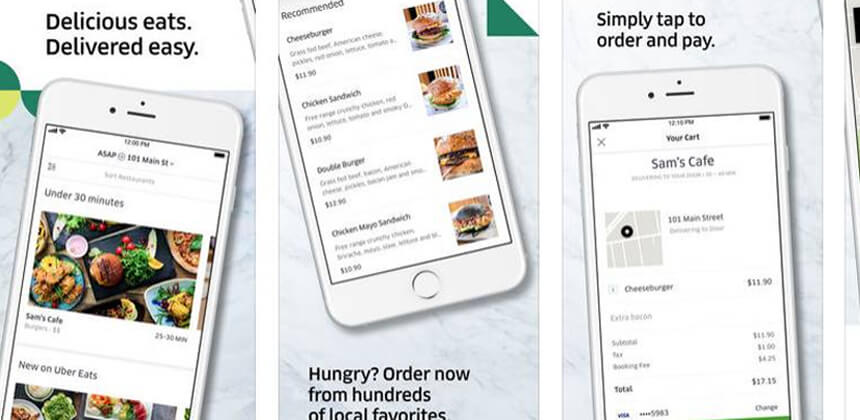 Uber Eats was launched in 2014 as an additional revenue stream for the company. However, the standalone mobile application was not released until the end of 2015, with Toronto serving as a testing site initially. Today, Uber Eats operates in over 6000 cities across 45 countries and has become the delivery service of choice for the majority.
The experience was the reason why Uber chose React Native for the Uber Eats mobile application. Their web applications are based on React, therefore it seemed only natural that their mobile applications would do the same.
Another reason for utilizing React Native was its compatibility with existing native technologies and JavaScript-based solutions that Uber employs. Examples include pulling Objective-C and JavaScript dependencies such as user authentication, app analytics, and crash reports. This, together with the possibility of gradually transitioning existing native mobile technologies to React Native, made it a tempting alternative.
Uber Eats currently ranks second in the App Store's Food and Drinks category and has been downloaded by more than 100 million Google Play users.
Uber Eats was launched in 2014 as an additional revenue stream for the company. However, the standalone mobile application was not released until the end of 2015, with Toronto serving as a testing site initially. Today, Uber Eats operates in over 6000 cities across 45 countries and has become the delivery service of choice for the majority.
The experience was the reason why Uber chose React Native for the Uber Eats mobile application. Their web applications are based on React, therefore it seemed only natural that their mobile applications would do the same.
Another reason for utilizing React Native was its compatibility with existing native technologies and JavaScript-based solutions that Uber employs. Examples include pulling Objective-C and JavaScript dependencies such as user authentication, app analytics, and crash reports. This, together with the possibility of gradually transitioning existing native mobile technologies to React Native, made it a tempting alternative.
Uber Eats currently ranks second in the App Store's Food and Drinks category and has been downloaded by more than 100 million Google Play users.
 Approximately fifty years ago, Walmart was founded on the basic premise of selling more for less, the conventional discount store's dream. Since then, the retail network has expanded to more than 27 countries and today has over 11,500 outlets globally.
In 2011, they released their first mobile application as a native app for iOS. Walmart was compelled to transition to a superior solution, React Native, due to the observable shift toward cross-platform technologies with shorter development times and lower prices.
Similar to Uber Eats, the transition was not immediate. In 2017, Walmart introduced React Native as an alternative to its mobile technology. It took the team till 2019 to replace 90 percent of the original native infrastructure of the Walmart Grocery App with React Native. Interestingly, this % is neither an error nor a result of the app's unreadiness. It is a strategic decision based on the maxim "if it's not broken, don't fix it." There are specific native Walmart functions that perform better than the alternative. Walmart's retention of its native navigation system as opposed to implementing React Native's navigation system is one such example. As a result of native navigation, Walmart's developers can integrate future features more easily, and A/B testing is more effective.
Walmart Grocery app has more than fifty million downloads on Google Play and ranks fourth in Shopping on the App Store.
Approximately fifty years ago, Walmart was founded on the basic premise of selling more for less, the conventional discount store's dream. Since then, the retail network has expanded to more than 27 countries and today has over 11,500 outlets globally.
In 2011, they released their first mobile application as a native app for iOS. Walmart was compelled to transition to a superior solution, React Native, due to the observable shift toward cross-platform technologies with shorter development times and lower prices.
Similar to Uber Eats, the transition was not immediate. In 2017, Walmart introduced React Native as an alternative to its mobile technology. It took the team till 2019 to replace 90 percent of the original native infrastructure of the Walmart Grocery App with React Native. Interestingly, this % is neither an error nor a result of the app's unreadiness. It is a strategic decision based on the maxim "if it's not broken, don't fix it." There are specific native Walmart functions that perform better than the alternative. Walmart's retention of its native navigation system as opposed to implementing React Native's navigation system is one such example. As a result of native navigation, Walmart's developers can integrate future features more easily, and A/B testing is more effective.
Walmart Grocery app has more than fifty million downloads on Google Play and ranks fourth in Shopping on the App Store.
 Pinterest was created in 2010 and rapidly captivated the market with its distinctive and visually appealing platform. If you've never heard of mood boards if you've never heard of Pinterest. Discover ideas, build your own boards, and share them with friends and strangers alike.
When Pinterest began contemplating React Native for mobile, they were already utilizing React for their web apps. And the rationale for selecting the mobile framework remains the same. It is the ability to share code, resulting in reduced development time, improved performance, and scalability.
Pinterest has around 200 billion pins and approximately 350 million active users. Even more impressively, Pinterest records almost 2 billion monthly queries, 600 million of which are visual. It is evident that Pinterest required a tool with speedy startup and rendering times. And what tool is superior to React Native? Pinterest has been downloaded by more than 100 million people on Google Play, where it ranks as the number one Lifestyle mobile app.
Pinterest was created in 2010 and rapidly captivated the market with its distinctive and visually appealing platform. If you've never heard of mood boards if you've never heard of Pinterest. Discover ideas, build your own boards, and share them with friends and strangers alike.
When Pinterest began contemplating React Native for mobile, they were already utilizing React for their web apps. And the rationale for selecting the mobile framework remains the same. It is the ability to share code, resulting in reduced development time, improved performance, and scalability.
Pinterest has around 200 billion pins and approximately 350 million active users. Even more impressively, Pinterest records almost 2 billion monthly queries, 600 million of which are visual. It is evident that Pinterest required a tool with speedy startup and rendering times. And what tool is superior to React Native? Pinterest has been downloaded by more than 100 million people on Google Play, where it ranks as the number one Lifestyle mobile app.
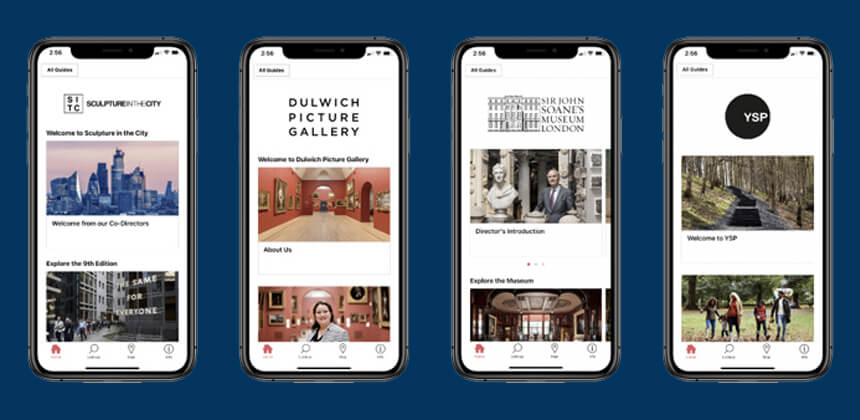 Bloomberg describes itself as a "high technology, market-moving, data-driven, cross-platform information organization." In other words, everything that React Native enables and supports. Bloomberg is a world-renowned financial and business software company that provides analytics, news, and insights.
Bloomberg introduced its mobile app in 2016 with the intention of aiding financial market decision-makers on the go and more quickly. This remarkable app was developed in about six months, which is at least half the time required to develop a native app for iOS and Android.
According to Bloomberg, React Native provides the same justifications as everyone else: it's quick, reduces development time, and integrates beautifully with native mobile or web technologies.
With over ten million downloads on Google Play, Bloomberg is currently ranked #42 in News on the App Store.
Bloomberg describes itself as a "high technology, market-moving, data-driven, cross-platform information organization." In other words, everything that React Native enables and supports. Bloomberg is a world-renowned financial and business software company that provides analytics, news, and insights.
Bloomberg introduced its mobile app in 2016 with the intention of aiding financial market decision-makers on the go and more quickly. This remarkable app was developed in about six months, which is at least half the time required to develop a native app for iOS and Android.
According to Bloomberg, React Native provides the same justifications as everyone else: it's quick, reduces development time, and integrates beautifully with native mobile or web technologies.
With over ten million downloads on Google Play, Bloomberg is currently ranked #42 in News on the App Store.
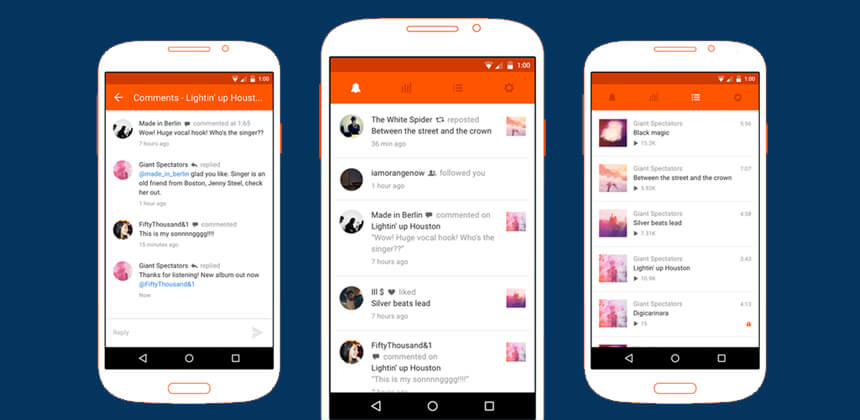 In a blog post published on the company's official site, SoundCloud revealed that when they began creating their new app for creators, SoundCloud Pulse, in 2016, they ran into a few problems. Should they begin with iOS solely, given that the bulk of developers was on that platform at the time, or both iOS and Android? Finding iOS engineers proved to be more difficult than anticipated.
Therefore, they explored for alternative technologies to replace the native ones and discovered React Native, which is only five months old. Since it was created by Facebook, this new framework held great potential, but will it live up to the hype, and will it be superior to native development?
The SoundCloud team chose to experiment with React Native, and with two JavaScript engineers and an iOS engineer, they began their journey. They quickly realized that React Native was definitely the best option. First, they did not have to replace native libraries because the Facebook SDK, the Google sign-in, and others had already constructed the bridge. Testing was also simple, as React Native's testing environments closely resembled native ones in appearance and behavior. Moreover, SoundCloud was now able to integrate ever more web libraries into its infrastructure.
The single disadvantage identified by the SoundCloud team is the rapid evolution of React Native, which necessitates more time for substantial code maintenance. However, this should be standard for all technologies and is not a deal-breaker for SoundCloud.
On Google Play, SoundCloud Pulse has surpassed five million downloads. However, it now ranks just #198 in Social Networking on the App Store, which is to be anticipated given the nature of the app.
In a blog post published on the company's official site, SoundCloud revealed that when they began creating their new app for creators, SoundCloud Pulse, in 2016, they ran into a few problems. Should they begin with iOS solely, given that the bulk of developers was on that platform at the time, or both iOS and Android? Finding iOS engineers proved to be more difficult than anticipated.
Therefore, they explored for alternative technologies to replace the native ones and discovered React Native, which is only five months old. Since it was created by Facebook, this new framework held great potential, but will it live up to the hype, and will it be superior to native development?
The SoundCloud team chose to experiment with React Native, and with two JavaScript engineers and an iOS engineer, they began their journey. They quickly realized that React Native was definitely the best option. First, they did not have to replace native libraries because the Facebook SDK, the Google sign-in, and others had already constructed the bridge. Testing was also simple, as React Native's testing environments closely resembled native ones in appearance and behavior. Moreover, SoundCloud was now able to integrate ever more web libraries into its infrastructure.
The single disadvantage identified by the SoundCloud team is the rapid evolution of React Native, which necessitates more time for substantial code maintenance. However, this should be standard for all technologies and is not a deal-breaker for SoundCloud.
On Google Play, SoundCloud Pulse has surpassed five million downloads. However, it now ranks just #198 in Social Networking on the App Store, which is to be anticipated given the nature of the app.
 Discord, a favorite among gamers, in particular, is the fourth most popular social networking software on the App Store. Additionally, it was downloaded over one hundred million times through Google Play.
Discord was designed specifically for gaming communities. Specifically, their primary objective was to create a platform where users may connect with friends and family while playing. Currently, Discord allows users to simultaneously text, voice chat, and broadcast videos.
The software enables users to construct or join a server that is then partitioned into distinct voice and text channels. Once within a speech channel, each user can also share their screen or camera. Meanwhile, the remaining members choose which stream or feed to view. Obviously, this function distinguishes Discord from other chat systems such as Messenger and Skype.
As soon as React Native for iOS became open-source, Discord adopted it. Years later, the Discord team discovered that their software was incapable of maintaining the promised 60 frames per second. With only a few weeks of updates and improvements aided by free tools from the React Native community, the app once again maintained the target frame rate. However, some modifications also resulted in "unexpected" benefits. They were able to shave two seconds off the overall loading time, and the fundamental navigation system now features fluid gesture interactions. Discord demonstrated, in a nutshell, why code maintenance is so crucial. And despite the fact that you may find it annoying, the long-term benefits obviously exceed the inconvenience.
Discord, a favorite among gamers, in particular, is the fourth most popular social networking software on the App Store. Additionally, it was downloaded over one hundred million times through Google Play.
Discord was designed specifically for gaming communities. Specifically, their primary objective was to create a platform where users may connect with friends and family while playing. Currently, Discord allows users to simultaneously text, voice chat, and broadcast videos.
The software enables users to construct or join a server that is then partitioned into distinct voice and text channels. Once within a speech channel, each user can also share their screen or camera. Meanwhile, the remaining members choose which stream or feed to view. Obviously, this function distinguishes Discord from other chat systems such as Messenger and Skype.
As soon as React Native for iOS became open-source, Discord adopted it. Years later, the Discord team discovered that their software was incapable of maintaining the promised 60 frames per second. With only a few weeks of updates and improvements aided by free tools from the React Native community, the app once again maintained the target frame rate. However, some modifications also resulted in "unexpected" benefits. They were able to shave two seconds off the overall loading time, and the fundamental navigation system now features fluid gesture interactions. Discord demonstrated, in a nutshell, why code maintenance is so crucial. And despite the fact that you may find it annoying, the long-term benefits obviously exceed the inconvenience.
 Tal Kol, Wix's mobile app architect discussed some of the challenges of emerging mobile technology in his 2016 talk in which React Native was just one year old. It was too fresh, insufficient, unpolished, and unstable. In other words, despite the fact that React Native appeared to be the greatest choice for Wix's new mobile application, it failed to meet expectations.
However, Wix currently employs roughly 200 frontend engineers with expertise in JavaScript. Consequently, they determined that it would still be more advantageous for them to create the Wix application from scratch and solve everything React Native cannot accomplish. This is not only more cost-effective for them, but they might also contribute to the open-source community.
The Wix application still uses some native components, such as the main user interface. According to Tal Kol, however, approximately 95% of the program ran on React Native. Wix now ranks #25 in Productivity on the App Store and has been downloaded more than 5 million times on Google Play.
Tal Kol, Wix's mobile app architect discussed some of the challenges of emerging mobile technology in his 2016 talk in which React Native was just one year old. It was too fresh, insufficient, unpolished, and unstable. In other words, despite the fact that React Native appeared to be the greatest choice for Wix's new mobile application, it failed to meet expectations.
However, Wix currently employs roughly 200 frontend engineers with expertise in JavaScript. Consequently, they determined that it would still be more advantageous for them to create the Wix application from scratch and solve everything React Native cannot accomplish. This is not only more cost-effective for them, but they might also contribute to the open-source community.
The Wix application still uses some native components, such as the main user interface. According to Tal Kol, however, approximately 95% of the program ran on React Native. Wix now ranks #25 in Productivity on the App Store and has been downloaded more than 5 million times on Google Play.
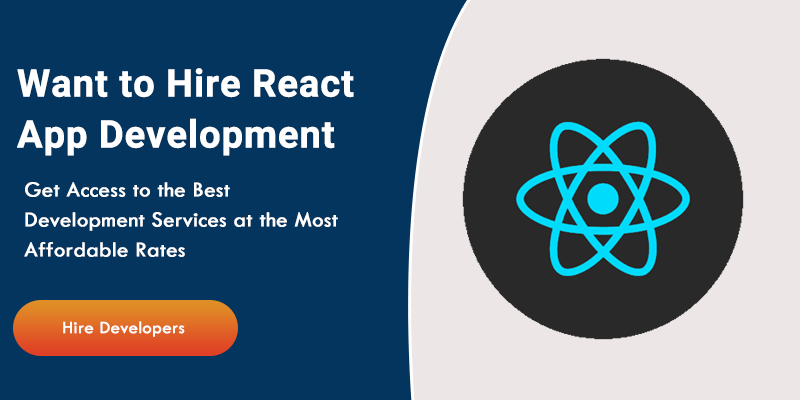 Related Article:
Related Article:
A Brief History of React Native?
The cross-platform mobile development framework React Native is built on Facebook's React framework. The technique was released in 2015 and made open-source practically immediately thereafter. React Native is a JavaScript framework used to develop iOS and Android applications, similar to React. Because it is based on JavaScript, React Native is straightforward to adopt, particularly for frontend developers. However, React Native has another ace up its sleeve: it works equally well with native technologies and web technologies like HTML5. Thus, React Native is an adaptable and attractive technology. As evidence, here are the most popular React Native applications of 2023-24.1. Facebook
 Facebook is currently the most popular social network, and its mobile version is among the most popular apps in the world. Since 2010, Facebook, being the progressive tech titan that it is, has attempted to build a cross-platform application. At a time when other companies were significantly investing in native applications, this was a novel and odd concept.
Unfortunately, the available mobile development technologies were not cross-platform-ready in 2010, particularly for Facebook's requirements. Consequently, the original application was slow and buggy. In actuality, they were confronted with the identical problems they had when launching the website. As a result, they utilized their experience and accomplished precisely what they did with the website – they created a new framework that fulfills the requirements. Thus, React Native and the Facebook app we now know and love was born.
The Facebook app has been downloaded over 5 billion times on Google Play and is the most popular social networking app in the App Store. The Facebook app is now available for no cost and is identical to the Facebook website in every manner. From the user interface design to the functionalities, the mobile application consistently provides a flawless, immersive experience.
Facebook is currently the most popular social network, and its mobile version is among the most popular apps in the world. Since 2010, Facebook, being the progressive tech titan that it is, has attempted to build a cross-platform application. At a time when other companies were significantly investing in native applications, this was a novel and odd concept.
Unfortunately, the available mobile development technologies were not cross-platform-ready in 2010, particularly for Facebook's requirements. Consequently, the original application was slow and buggy. In actuality, they were confronted with the identical problems they had when launching the website. As a result, they utilized their experience and accomplished precisely what they did with the website – they created a new framework that fulfills the requirements. Thus, React Native and the Facebook app we now know and love was born.
The Facebook app has been downloaded over 5 billion times on Google Play and is the most popular social networking app in the App Store. The Facebook app is now available for no cost and is identical to the Facebook website in every manner. From the user interface design to the functionalities, the mobile application consistently provides a flawless, immersive experience.
2. Instagram
 Instagram was published around the same time as the first version of Facebook's mobile app and immediately took the market by storm. Therefore, Instagram registered 25.000 users on its first day, and 100,000 downloads within a week. When Facebook acquired Instagram in April 2012, the mobile app already had 2 7 million users.
In 2016, the Instagram team began investigating React Native and how it could assist their teams to publish updates more quickly. React Native now powers numerous Instagram features. According to the development team, the iOS and Android versions of the application share 99 percent of the same code base for the post promote functionality. In addition, they share 97% of the SMS Captcha checkpoint, 85% of the comment moderation, 87% of the lead-generating advertisements, and 92% of the push notification codes.
Obviously, the implementation of React Native made Instagram's experience significantly better. The icing on the cake is that, as a result of React Native, Instagram now has an almost instantaneous startup time. Today, Instagram has over one billion downloads on Google Play and ranks second in the App Store's Photos and Video category.
Instagram was published around the same time as the first version of Facebook's mobile app and immediately took the market by storm. Therefore, Instagram registered 25.000 users on its first day, and 100,000 downloads within a week. When Facebook acquired Instagram in April 2012, the mobile app already had 2 7 million users.
In 2016, the Instagram team began investigating React Native and how it could assist their teams to publish updates more quickly. React Native now powers numerous Instagram features. According to the development team, the iOS and Android versions of the application share 99 percent of the same code base for the post promote functionality. In addition, they share 97% of the SMS Captcha checkpoint, 85% of the comment moderation, 87% of the lead-generating advertisements, and 92% of the push notification codes.
Obviously, the implementation of React Native made Instagram's experience significantly better. The icing on the cake is that, as a result of React Native, Instagram now has an almost instantaneous startup time. Today, Instagram has over one billion downloads on Google Play and ranks second in the App Store's Photos and Video category.
3. Skype
 Since a very long time, Skype has been one of the most popular video conference software. This Microsoft-owned platform connects tens of thousands of people and teams daily across the globe. Moreover, while it is common knowledge that their desktop application is built with Electron, their mobile application is developed with React Native.
Microsoft has its own C#-based cross-platform mobile development tool, Xamarin. Why would they instead utilize React Native? The answer is simplicity and performance. Simply, React Native is easier to learn and requires less modification for iOS and Android app versions to function. As Instagram demonstrates, an app developed using React Native shares between 85 and 97 percent of the same code for the two versions.
Microsoft was also not satisfied with this, so they took React Native to an all-new level. They created a simple, thin overlay for React Native using the ReactXP framework. As the developers of React are fond of saying, "learn once, write everywhere." This framework obviates the necessity to code the view layer, i.e., the exact UI elements that make an application compatible with each platform. Obviously, developers may still tweak each app for a more natural feel if they so choose. However, this is no longer required with ReactXP.
Skype has been downloaded by more than one billion Google Play users and is now ranked #27 in the Social Networking category on the App Store.
Since a very long time, Skype has been one of the most popular video conference software. This Microsoft-owned platform connects tens of thousands of people and teams daily across the globe. Moreover, while it is common knowledge that their desktop application is built with Electron, their mobile application is developed with React Native.
Microsoft has its own C#-based cross-platform mobile development tool, Xamarin. Why would they instead utilize React Native? The answer is simplicity and performance. Simply, React Native is easier to learn and requires less modification for iOS and Android app versions to function. As Instagram demonstrates, an app developed using React Native shares between 85 and 97 percent of the same code for the two versions.
Microsoft was also not satisfied with this, so they took React Native to an all-new level. They created a simple, thin overlay for React Native using the ReactXP framework. As the developers of React are fond of saying, "learn once, write everywhere." This framework obviates the necessity to code the view layer, i.e., the exact UI elements that make an application compatible with each platform. Obviously, developers may still tweak each app for a more natural feel if they so choose. However, this is no longer required with ReactXP.
Skype has been downloaded by more than one billion Google Play users and is now ranked #27 in the Social Networking category on the App Store.
4. Uber Eats
 Uber Eats was launched in 2014 as an additional revenue stream for the company. However, the standalone mobile application was not released until the end of 2015, with Toronto serving as a testing site initially. Today, Uber Eats operates in over 6000 cities across 45 countries and has become the delivery service of choice for the majority.
The experience was the reason why Uber chose React Native for the Uber Eats mobile application. Their web applications are based on React, therefore it seemed only natural that their mobile applications would do the same.
Another reason for utilizing React Native was its compatibility with existing native technologies and JavaScript-based solutions that Uber employs. Examples include pulling Objective-C and JavaScript dependencies such as user authentication, app analytics, and crash reports. This, together with the possibility of gradually transitioning existing native mobile technologies to React Native, made it a tempting alternative.
Uber Eats currently ranks second in the App Store's Food and Drinks category and has been downloaded by more than 100 million Google Play users.
Uber Eats was launched in 2014 as an additional revenue stream for the company. However, the standalone mobile application was not released until the end of 2015, with Toronto serving as a testing site initially. Today, Uber Eats operates in over 6000 cities across 45 countries and has become the delivery service of choice for the majority.
The experience was the reason why Uber chose React Native for the Uber Eats mobile application. Their web applications are based on React, therefore it seemed only natural that their mobile applications would do the same.
Another reason for utilizing React Native was its compatibility with existing native technologies and JavaScript-based solutions that Uber employs. Examples include pulling Objective-C and JavaScript dependencies such as user authentication, app analytics, and crash reports. This, together with the possibility of gradually transitioning existing native mobile technologies to React Native, made it a tempting alternative.
Uber Eats currently ranks second in the App Store's Food and Drinks category and has been downloaded by more than 100 million Google Play users.
5. Walmart
 Approximately fifty years ago, Walmart was founded on the basic premise of selling more for less, the conventional discount store's dream. Since then, the retail network has expanded to more than 27 countries and today has over 11,500 outlets globally.
In 2011, they released their first mobile application as a native app for iOS. Walmart was compelled to transition to a superior solution, React Native, due to the observable shift toward cross-platform technologies with shorter development times and lower prices.
Similar to Uber Eats, the transition was not immediate. In 2017, Walmart introduced React Native as an alternative to its mobile technology. It took the team till 2019 to replace 90 percent of the original native infrastructure of the Walmart Grocery App with React Native. Interestingly, this % is neither an error nor a result of the app's unreadiness. It is a strategic decision based on the maxim "if it's not broken, don't fix it." There are specific native Walmart functions that perform better than the alternative. Walmart's retention of its native navigation system as opposed to implementing React Native's navigation system is one such example. As a result of native navigation, Walmart's developers can integrate future features more easily, and A/B testing is more effective.
Walmart Grocery app has more than fifty million downloads on Google Play and ranks fourth in Shopping on the App Store.
Approximately fifty years ago, Walmart was founded on the basic premise of selling more for less, the conventional discount store's dream. Since then, the retail network has expanded to more than 27 countries and today has over 11,500 outlets globally.
In 2011, they released their first mobile application as a native app for iOS. Walmart was compelled to transition to a superior solution, React Native, due to the observable shift toward cross-platform technologies with shorter development times and lower prices.
Similar to Uber Eats, the transition was not immediate. In 2017, Walmart introduced React Native as an alternative to its mobile technology. It took the team till 2019 to replace 90 percent of the original native infrastructure of the Walmart Grocery App with React Native. Interestingly, this % is neither an error nor a result of the app's unreadiness. It is a strategic decision based on the maxim "if it's not broken, don't fix it." There are specific native Walmart functions that perform better than the alternative. Walmart's retention of its native navigation system as opposed to implementing React Native's navigation system is one such example. As a result of native navigation, Walmart's developers can integrate future features more easily, and A/B testing is more effective.
Walmart Grocery app has more than fifty million downloads on Google Play and ranks fourth in Shopping on the App Store.
6. Pinterest
 Pinterest was created in 2010 and rapidly captivated the market with its distinctive and visually appealing platform. If you've never heard of mood boards if you've never heard of Pinterest. Discover ideas, build your own boards, and share them with friends and strangers alike.
When Pinterest began contemplating React Native for mobile, they were already utilizing React for their web apps. And the rationale for selecting the mobile framework remains the same. It is the ability to share code, resulting in reduced development time, improved performance, and scalability.
Pinterest has around 200 billion pins and approximately 350 million active users. Even more impressively, Pinterest records almost 2 billion monthly queries, 600 million of which are visual. It is evident that Pinterest required a tool with speedy startup and rendering times. And what tool is superior to React Native? Pinterest has been downloaded by more than 100 million people on Google Play, where it ranks as the number one Lifestyle mobile app.
Pinterest was created in 2010 and rapidly captivated the market with its distinctive and visually appealing platform. If you've never heard of mood boards if you've never heard of Pinterest. Discover ideas, build your own boards, and share them with friends and strangers alike.
When Pinterest began contemplating React Native for mobile, they were already utilizing React for their web apps. And the rationale for selecting the mobile framework remains the same. It is the ability to share code, resulting in reduced development time, improved performance, and scalability.
Pinterest has around 200 billion pins and approximately 350 million active users. Even more impressively, Pinterest records almost 2 billion monthly queries, 600 million of which are visual. It is evident that Pinterest required a tool with speedy startup and rendering times. And what tool is superior to React Native? Pinterest has been downloaded by more than 100 million people on Google Play, where it ranks as the number one Lifestyle mobile app.
7. Bloomberg
 Bloomberg describes itself as a "high technology, market-moving, data-driven, cross-platform information organization." In other words, everything that React Native enables and supports. Bloomberg is a world-renowned financial and business software company that provides analytics, news, and insights.
Bloomberg introduced its mobile app in 2016 with the intention of aiding financial market decision-makers on the go and more quickly. This remarkable app was developed in about six months, which is at least half the time required to develop a native app for iOS and Android.
According to Bloomberg, React Native provides the same justifications as everyone else: it's quick, reduces development time, and integrates beautifully with native mobile or web technologies.
With over ten million downloads on Google Play, Bloomberg is currently ranked #42 in News on the App Store.
Bloomberg describes itself as a "high technology, market-moving, data-driven, cross-platform information organization." In other words, everything that React Native enables and supports. Bloomberg is a world-renowned financial and business software company that provides analytics, news, and insights.
Bloomberg introduced its mobile app in 2016 with the intention of aiding financial market decision-makers on the go and more quickly. This remarkable app was developed in about six months, which is at least half the time required to develop a native app for iOS and Android.
According to Bloomberg, React Native provides the same justifications as everyone else: it's quick, reduces development time, and integrates beautifully with native mobile or web technologies.
With over ten million downloads on Google Play, Bloomberg is currently ranked #42 in News on the App Store.
8. SoundCloud Pulse
 In a blog post published on the company's official site, SoundCloud revealed that when they began creating their new app for creators, SoundCloud Pulse, in 2016, they ran into a few problems. Should they begin with iOS solely, given that the bulk of developers was on that platform at the time, or both iOS and Android? Finding iOS engineers proved to be more difficult than anticipated.
Therefore, they explored for alternative technologies to replace the native ones and discovered React Native, which is only five months old. Since it was created by Facebook, this new framework held great potential, but will it live up to the hype, and will it be superior to native development?
The SoundCloud team chose to experiment with React Native, and with two JavaScript engineers and an iOS engineer, they began their journey. They quickly realized that React Native was definitely the best option. First, they did not have to replace native libraries because the Facebook SDK, the Google sign-in, and others had already constructed the bridge. Testing was also simple, as React Native's testing environments closely resembled native ones in appearance and behavior. Moreover, SoundCloud was now able to integrate ever more web libraries into its infrastructure.
The single disadvantage identified by the SoundCloud team is the rapid evolution of React Native, which necessitates more time for substantial code maintenance. However, this should be standard for all technologies and is not a deal-breaker for SoundCloud.
On Google Play, SoundCloud Pulse has surpassed five million downloads. However, it now ranks just #198 in Social Networking on the App Store, which is to be anticipated given the nature of the app.
In a blog post published on the company's official site, SoundCloud revealed that when they began creating their new app for creators, SoundCloud Pulse, in 2016, they ran into a few problems. Should they begin with iOS solely, given that the bulk of developers was on that platform at the time, or both iOS and Android? Finding iOS engineers proved to be more difficult than anticipated.
Therefore, they explored for alternative technologies to replace the native ones and discovered React Native, which is only five months old. Since it was created by Facebook, this new framework held great potential, but will it live up to the hype, and will it be superior to native development?
The SoundCloud team chose to experiment with React Native, and with two JavaScript engineers and an iOS engineer, they began their journey. They quickly realized that React Native was definitely the best option. First, they did not have to replace native libraries because the Facebook SDK, the Google sign-in, and others had already constructed the bridge. Testing was also simple, as React Native's testing environments closely resembled native ones in appearance and behavior. Moreover, SoundCloud was now able to integrate ever more web libraries into its infrastructure.
The single disadvantage identified by the SoundCloud team is the rapid evolution of React Native, which necessitates more time for substantial code maintenance. However, this should be standard for all technologies and is not a deal-breaker for SoundCloud.
On Google Play, SoundCloud Pulse has surpassed five million downloads. However, it now ranks just #198 in Social Networking on the App Store, which is to be anticipated given the nature of the app.
9. Discord
 Discord, a favorite among gamers, in particular, is the fourth most popular social networking software on the App Store. Additionally, it was downloaded over one hundred million times through Google Play.
Discord was designed specifically for gaming communities. Specifically, their primary objective was to create a platform where users may connect with friends and family while playing. Currently, Discord allows users to simultaneously text, voice chat, and broadcast videos.
The software enables users to construct or join a server that is then partitioned into distinct voice and text channels. Once within a speech channel, each user can also share their screen or camera. Meanwhile, the remaining members choose which stream or feed to view. Obviously, this function distinguishes Discord from other chat systems such as Messenger and Skype.
As soon as React Native for iOS became open-source, Discord adopted it. Years later, the Discord team discovered that their software was incapable of maintaining the promised 60 frames per second. With only a few weeks of updates and improvements aided by free tools from the React Native community, the app once again maintained the target frame rate. However, some modifications also resulted in "unexpected" benefits. They were able to shave two seconds off the overall loading time, and the fundamental navigation system now features fluid gesture interactions. Discord demonstrated, in a nutshell, why code maintenance is so crucial. And despite the fact that you may find it annoying, the long-term benefits obviously exceed the inconvenience.
Discord, a favorite among gamers, in particular, is the fourth most popular social networking software on the App Store. Additionally, it was downloaded over one hundred million times through Google Play.
Discord was designed specifically for gaming communities. Specifically, their primary objective was to create a platform where users may connect with friends and family while playing. Currently, Discord allows users to simultaneously text, voice chat, and broadcast videos.
The software enables users to construct or join a server that is then partitioned into distinct voice and text channels. Once within a speech channel, each user can also share their screen or camera. Meanwhile, the remaining members choose which stream or feed to view. Obviously, this function distinguishes Discord from other chat systems such as Messenger and Skype.
As soon as React Native for iOS became open-source, Discord adopted it. Years later, the Discord team discovered that their software was incapable of maintaining the promised 60 frames per second. With only a few weeks of updates and improvements aided by free tools from the React Native community, the app once again maintained the target frame rate. However, some modifications also resulted in "unexpected" benefits. They were able to shave two seconds off the overall loading time, and the fundamental navigation system now features fluid gesture interactions. Discord demonstrated, in a nutshell, why code maintenance is so crucial. And despite the fact that you may find it annoying, the long-term benefits obviously exceed the inconvenience.
10. Wix
 Tal Kol, Wix's mobile app architect discussed some of the challenges of emerging mobile technology in his 2016 talk in which React Native was just one year old. It was too fresh, insufficient, unpolished, and unstable. In other words, despite the fact that React Native appeared to be the greatest choice for Wix's new mobile application, it failed to meet expectations.
However, Wix currently employs roughly 200 frontend engineers with expertise in JavaScript. Consequently, they determined that it would still be more advantageous for them to create the Wix application from scratch and solve everything React Native cannot accomplish. This is not only more cost-effective for them, but they might also contribute to the open-source community.
The Wix application still uses some native components, such as the main user interface. According to Tal Kol, however, approximately 95% of the program ran on React Native. Wix now ranks #25 in Productivity on the App Store and has been downloaded more than 5 million times on Google Play.
Tal Kol, Wix's mobile app architect discussed some of the challenges of emerging mobile technology in his 2016 talk in which React Native was just one year old. It was too fresh, insufficient, unpolished, and unstable. In other words, despite the fact that React Native appeared to be the greatest choice for Wix's new mobile application, it failed to meet expectations.
However, Wix currently employs roughly 200 frontend engineers with expertise in JavaScript. Consequently, they determined that it would still be more advantageous for them to create the Wix application from scratch and solve everything React Native cannot accomplish. This is not only more cost-effective for them, but they might also contribute to the open-source community.
The Wix application still uses some native components, such as the main user interface. According to Tal Kol, however, approximately 95% of the program ran on React Native. Wix now ranks #25 in Productivity on the App Store and has been downloaded more than 5 million times on Google Play.
Conclusion
React Native is an absolute treasure for mobile development. However, like every other technology, it has its pros and cons. For want of a better description, the primary issue with React Native is that it is continually changing. Consequently, if your team is not current on React Native's development, you will encounter certain difficulties. However, as we've seen with Discord, these situations are simple to resolve, so do not be disheartened. React Native is a free, scalable, and high-performance solution that supports some of the most popular apps in use today. This framework is compatible with both native and web technologies and may be integrated with stages. Therefore, if you are seeking a fresh and superior framework for your application, React Native is the best choice. Take a look at this article to learn why you should use React Native for your next mobile app project. Contact us at contact@zestminds.com. Related Article:
Related Article:
How Much Does React Native App Development Cost?
How to Choose the Best React Native Development Company?

Shivam Sharma
About the Author
With over 13 years of experience in software development, I am the Founder, Director, and CTO of Zestminds, an IT agency specializing in custom software solutions, AI innovation, and digital transformation. I lead a team of skilled engineers, helping businesses streamline processes, optimize performance, and achieve growth through scalable web and mobile applications, AI integration, and automation.
Stay Ahead with Expert Insights & Trends
Explore industry trends, expert analysis, and actionable strategies to drive success in AI, software development, and digital transformation.
